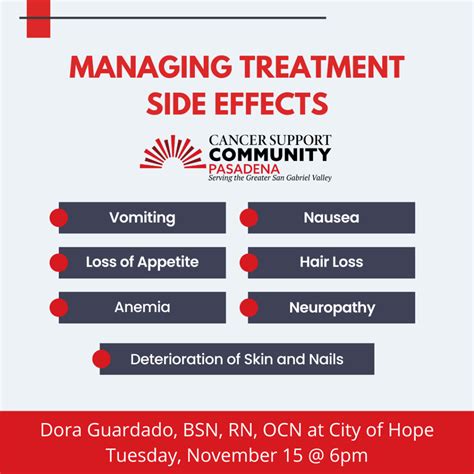Intro
Discover 4 common Tizanidine side effects, including muscle weakness, drowsiness, and liver damage, and learn how to manage them with proper dosage and medical supervision, minimizing risks and ensuring safe treatment for muscle spasms and spasticity.
The importance of understanding the potential side effects of medications cannot be overstated, especially when it comes to drugs like Tizanidine, which is commonly used to treat muscle spasms. Tizanidine, a central alpha-2 receptor agonist, works by stimulating certain receptors in the brain, leading to a decrease in muscle spasms. However, like all medications, it comes with its own set of side effects that can range from mild to severe. It's crucial for patients to be aware of these potential side effects to ensure they can make informed decisions about their treatment and to recognize when they might need to seek medical attention.
Muscle relaxants like Tizanidine are prescribed to alleviate symptoms of conditions such as multiple sclerosis and spinal cord injuries, which can cause painful muscle spasms. While effective, the use of these medications requires careful consideration of their potential impact on the body. Side effects can vary widely among individuals, and what might be a minor issue for one person could be a significant problem for another. Moreover, some side effects might not appear immediately but could develop over time, making ongoing monitoring and open communication with healthcare providers essential.
Understanding the side effects of Tizanidine also highlights the importance of personalized medicine. What works well for one patient might not be suitable for another due to differences in health status, other medications being taken, or individual tolerance to side effects. Healthcare providers must consider these factors when prescribing Tizanidine and monitor patients closely to adjust treatment plans as needed. Patients, too, play a critical role by reporting any changes or concerns they have, ensuring that their treatment is both effective and safe.
Tizanidine Overview

How Tizanidine Works
Tizanidine's mechanism of action involves the stimulation of alpha-2 adrenergic receptors in the brainstem, which results in the inhibition of excitatory neurotransmitters responsible for muscle spasms. By reducing the release of these neurotransmitters, Tizanidine decreases the muscle tone and relieves spasms. This action is specific to the central nervous system, which distinguishes Tizanidine from other types of muscle relaxants that may act directly on muscles.Common Side Effects of Tizanidine

Less Common but Serious Side Effects
While less frequent, Tizanidine can also cause more serious side effects, including hallucinations, fever, and changes in mental status. Patients experiencing any of these symptoms should seek immediate medical attention. Additionally, Tizanidine can interact with other medications, such as certain antidepressants, and can exacerbate conditions like bradycardia (slow heart rate) or hypotension (low blood pressure). Therefore, a comprehensive review of the patient's medical history and current medications is essential before starting Tizanidine.Tizanidine Interactions and Warnings

Special Precautions
Special precautions are necessary for certain populations, such as the elderly, who may be more susceptible to the sedative effects of Tizanidine. Additionally, patients with liver or kidney disease may require dose adjustments due to the potential for decreased drug clearance. Tizanidine should also be used with caution in pregnant or breastfeeding women, as its safety in these populations has not been extensively studied.Managing Tizanidine Side Effects

Alternative Treatments
For patients who experience significant side effects from Tizanidine or who do not respond well to the medication, alternative treatments may be considered. These can include other types of muscle relaxants, physical therapy, or interventions aimed at managing the underlying condition causing muscle spasms. The choice of alternative treatment depends on the patient's specific situation and should be made in consultation with a healthcare provider.Conclusion and Future Directions

Final Thoughts
As with any medication, the decision to use Tizanidine should be based on a thorough discussion between the patient and their healthcare provider, weighing the potential benefits against the risks. By being informed and proactive, patients can play a crucial role in ensuring their treatment is safe and effective.What is the most common side effect of Tizanidine?
+The most common side effects of Tizanidine include drowsiness, dizziness, weakness, nausea, and dry mouth.
Can Tizanidine be used in pregnant women?
+Tizanidine should be used with caution in pregnant women, as its safety in this population has not been extensively studied.
How does Tizanidine interact with other medications?
+Tizanidine can interact with certain medications, including fluvoxamine, ciprofloxacin, and antifungals, leading to increased levels of Tizanidine in the blood and potentially severe side effects.
We hope this comprehensive overview of Tizanidine side effects has been informative and helpful. If you have any further questions or would like to share your experiences with Tizanidine, please don't hesitate to comment below. Your insights can help others make more informed decisions about their treatment options. Additionally, if you found this article useful, consider sharing it with others who might benefit from this information. Together, we can promote better understanding and management of muscle spasms and their treatment.
